The box camera must be one of the longest running types ever produced. Niécephore Niépce used one to make the very first photographic image in the 1820s and Fox Talbot and Daguerre likewise ten years or so later. The type died out finally in the 1960s.
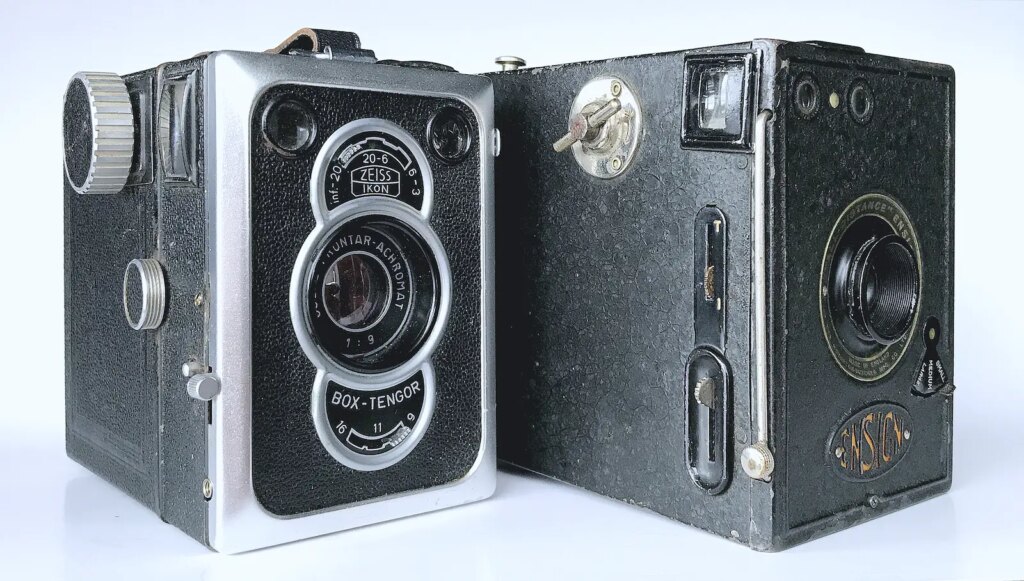
The very first versions were simply a box, the ‘film’ on one side and a lens on the other devoid of shutter or diaphragm, whilst the last was a quite sophisticated product. The Ensign All Distance I reviewed recently was one of several box cameras various manufacturers introduced in the 1920s and 30s seeking to offer a little more than the basic specification generally adopted. It had a two focus position lens and three stops to allow use in varying light.
Whilst researching my purchase of that camera I came across the Zeiss Box Tengor 56/2, the final version of the model, from the late 1950s. A camera that is widely praised today to judge by the many glowing reviews of it here and elsewhere on line.
Developed from the conventional looking 1924 Goerz camera of the same name, it continued in production after the Zeiss Ikon merger of 1926, so the Tengor has a very long pedigree. Its final iteration looks up-market, with the use of satin finished metal and leatherette, and less utilitarian fittings. Nevertheless, only minor functional and cosmetic improvements seem to have been made since it appeared in 1934 to the revised design under the Zeiss Ikon brand name.
When one came up for sale locally I bought it to see for myself what the result of 30 years of development may have produced.
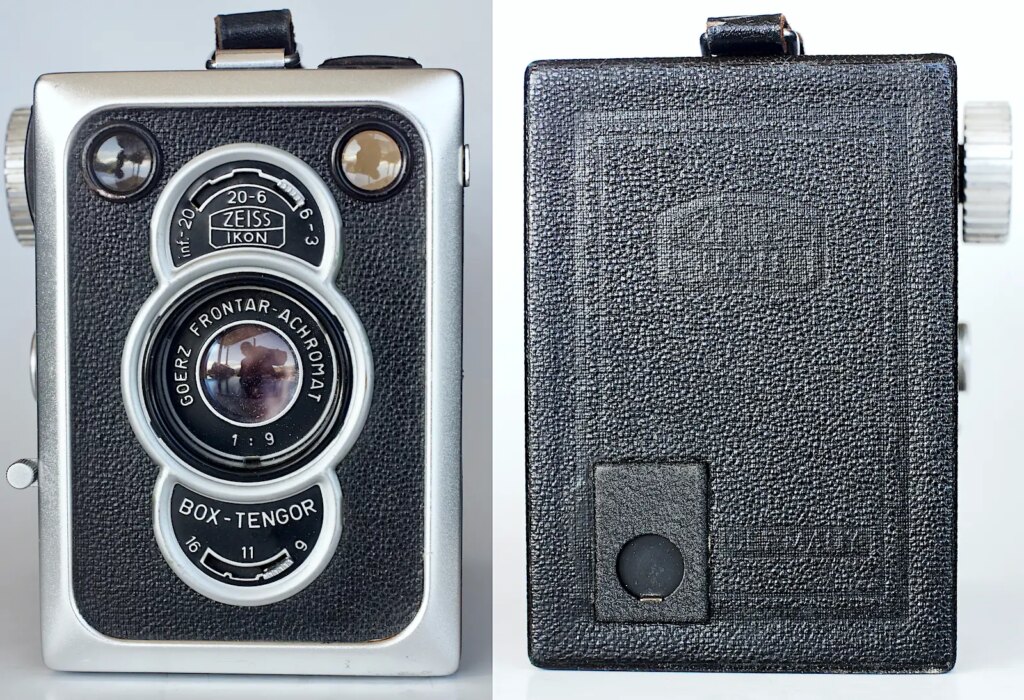
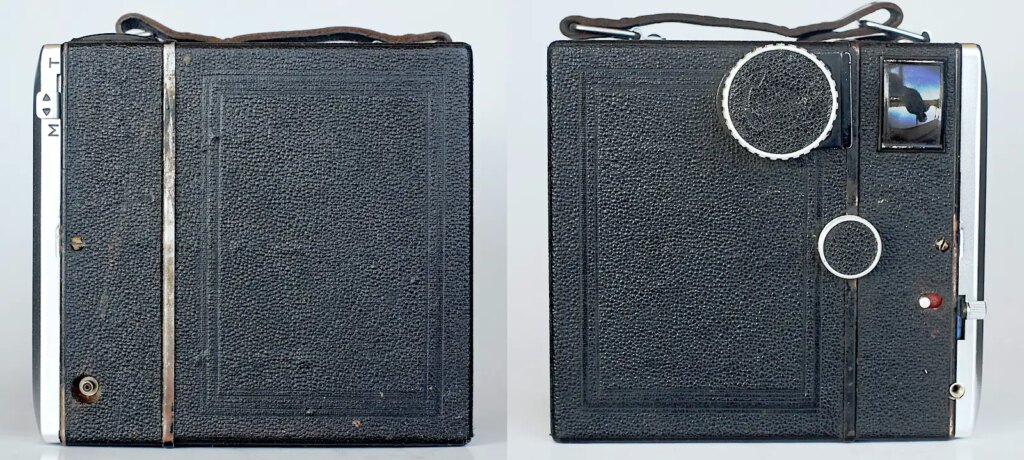
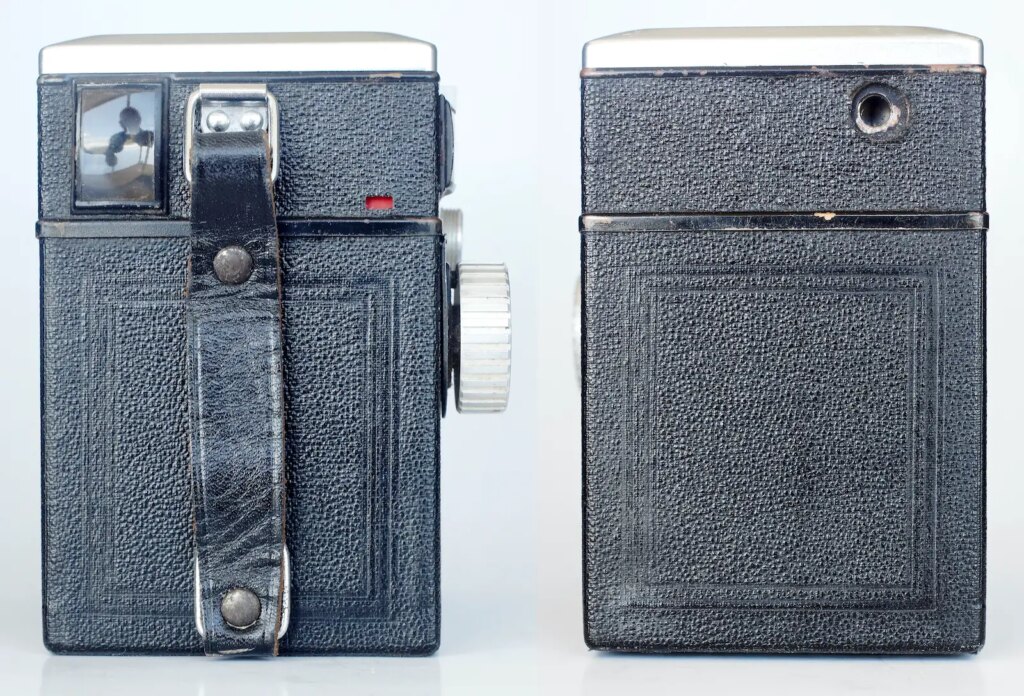
The Camera
While the 1927 Ensign is a very well made and solid camera, one of the first with an extended specification, the much later Zeiss is altogether more sophisticated and better finished in just about every respect. I was impressed by the overall quality of just about everything, reflecting the improvements in manufacturing and materials made over the years between their respective dates of production and the thoroughness of Zeiss engineering. In fact just what you would expect from a box camera made by Zeiss. Similar design elements, like the aperture selector and film winder, are easier to use and work more positively.
The Zeiss Box Tengor 56/2 lens is a two element achromat, a step up from the more common single element meniscus glass found on many box cameras, and better for colour film. Focal length is around 105mm, standard for 6×9. The finders are large and clear, the knurled, tensioned wind knob of a good size, and the back securing lock easy to use and positive. The single action release has a short throw with self capping return, is smooth and positive with a lock to prevent accidental operation and an option of fitting a cable release. A sliding cover over the film numbering window, flash synchronisation, double exposure prevention (the only thing to fail) and a tripod socket round out the features.
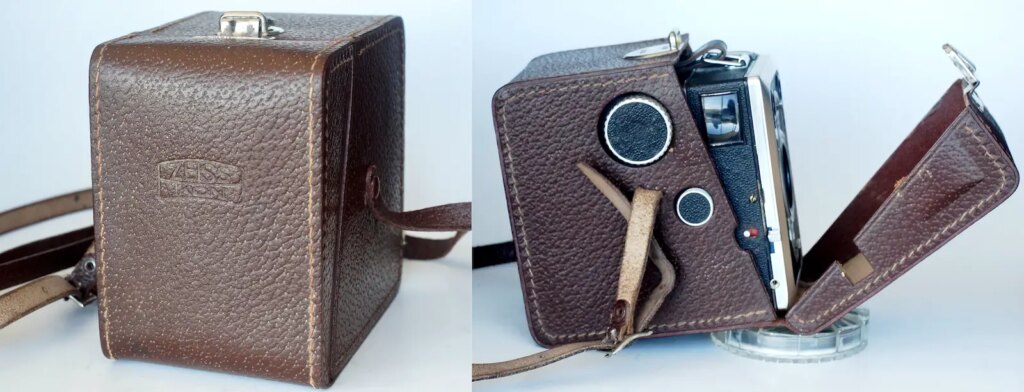
Even the case is of better quality than is usual for this type of camera and is well made from quality leather and fittings. It is an ever ready type so the camera can be used without removing it, simply letting down the front section as usual.
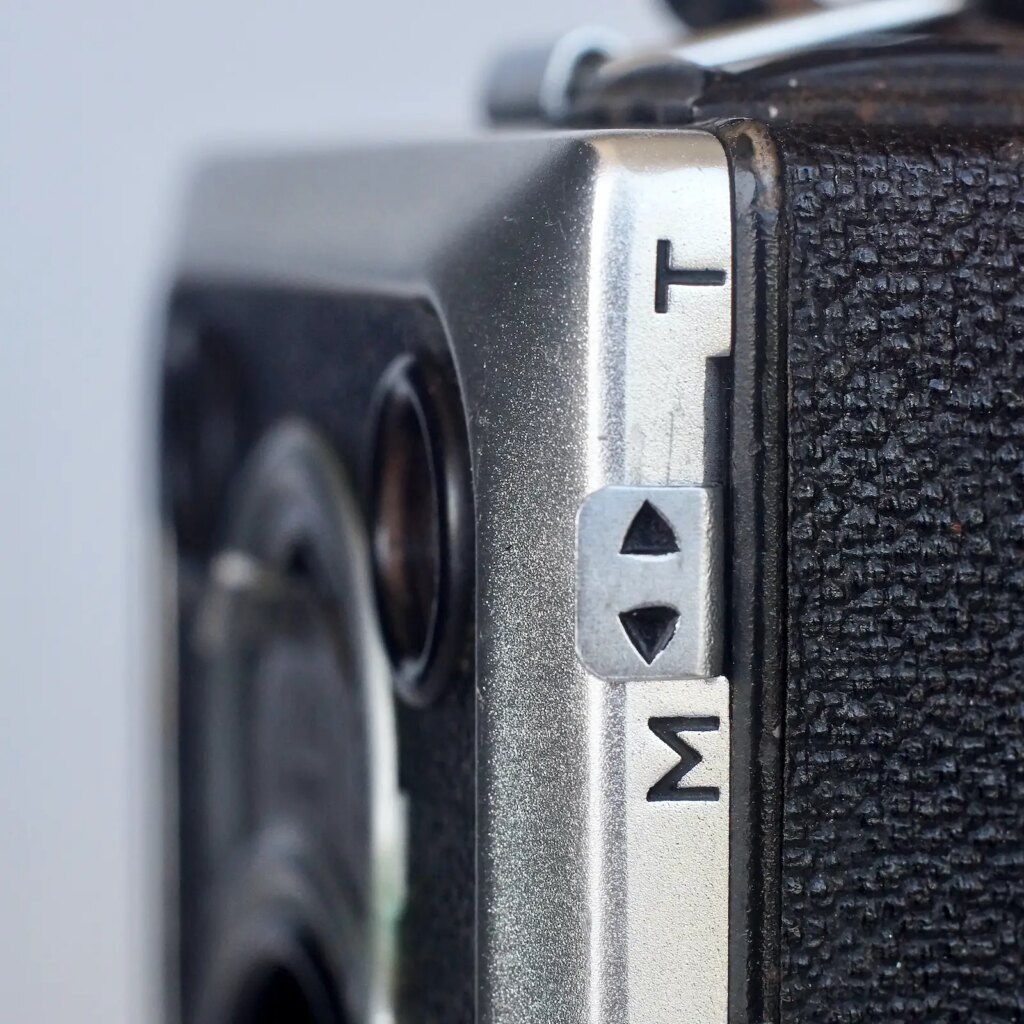
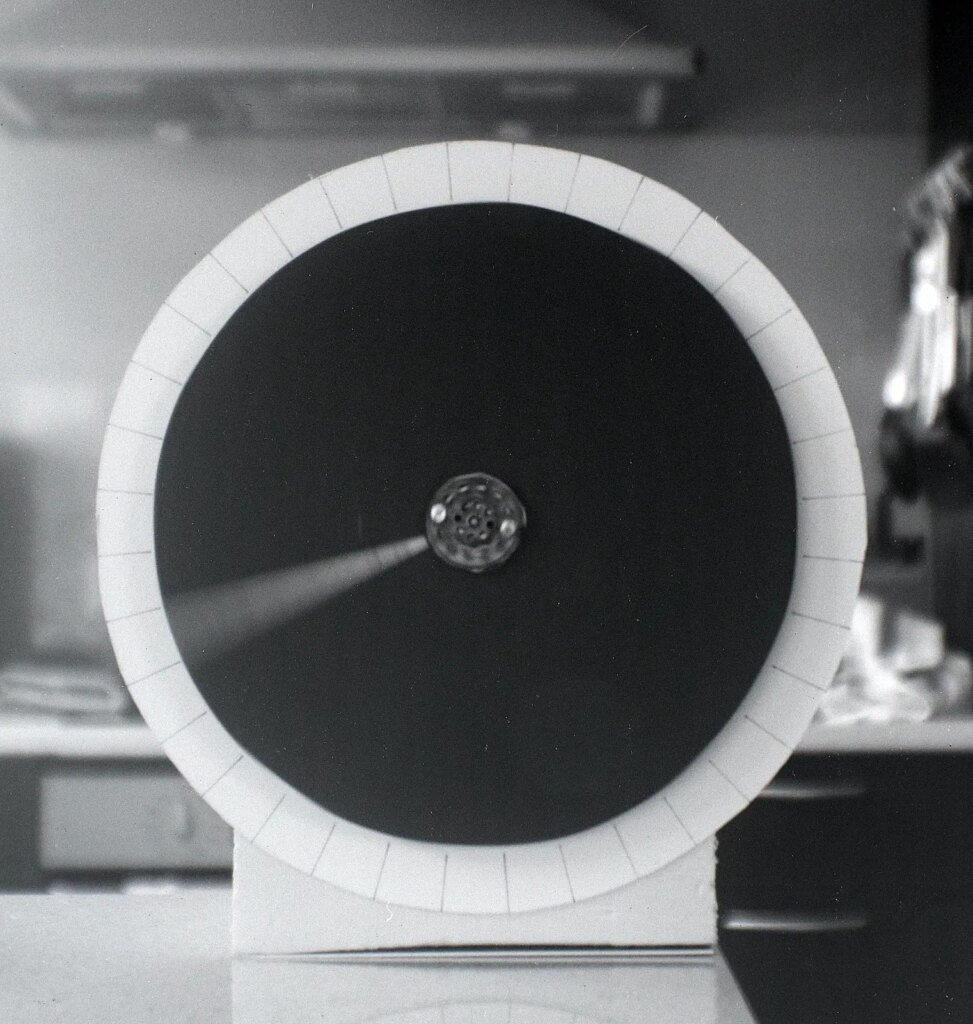
The camera has two shutter settings, selected with a neat slider, ‘M’ (Moment, a German noun for an instant) and ’T’. The ’T’ works like a conventional ‘B’ setting, the shutter staying open only as long as the release is depressed. To use it like the more usual ’T’, a locking cable release is needed
Shutter speed is approximately 1/30 according to specifications but I measured it at 1/40 or so with my rather crude device based on the old record player method. One 10º radial division in the example shown being approximately 1/50 sec for the disc’s speed at the time, no bad thing anyway, reducing camera shake without affecting exposure noticeably.
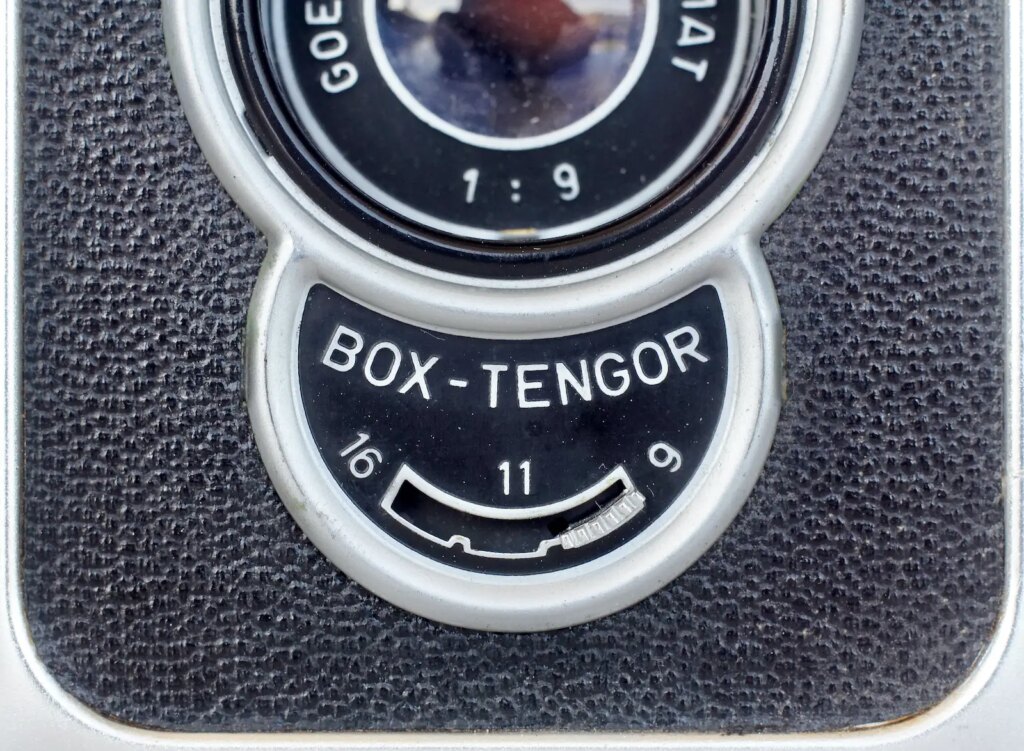
Apertures marked f9, f11 and f16 are selected across a quadrant with a lever and notched scale moving Waterhouse stops behind the lens with positive location.
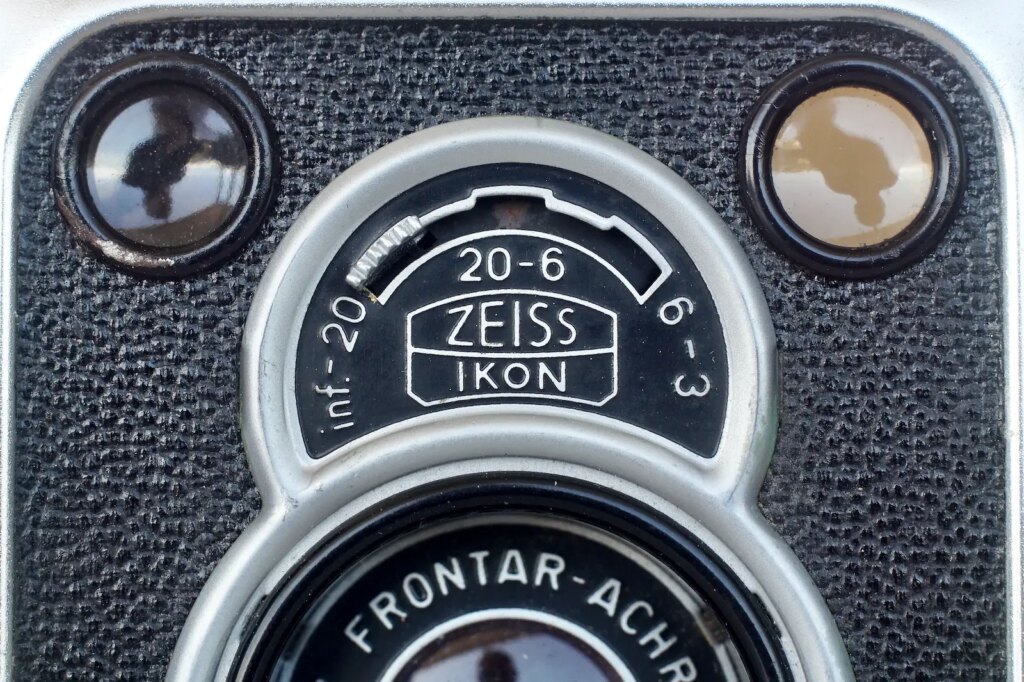
Distance selection uses the same method, the 20 feet – ∞ setting using the taking lens alone and moving supplementary lenses into the light path for 3-6 feet and 6-20 feet. Interestingly, the metric versions of the camera had settings of 1-2m, 2-8m and 8-∞, not exact equivalents, so calibration is somewhat approximate and could be taken to be the same as the ‘portrait’, ‘groups’ and ‘landscape’ graphics which became common on basic models later.
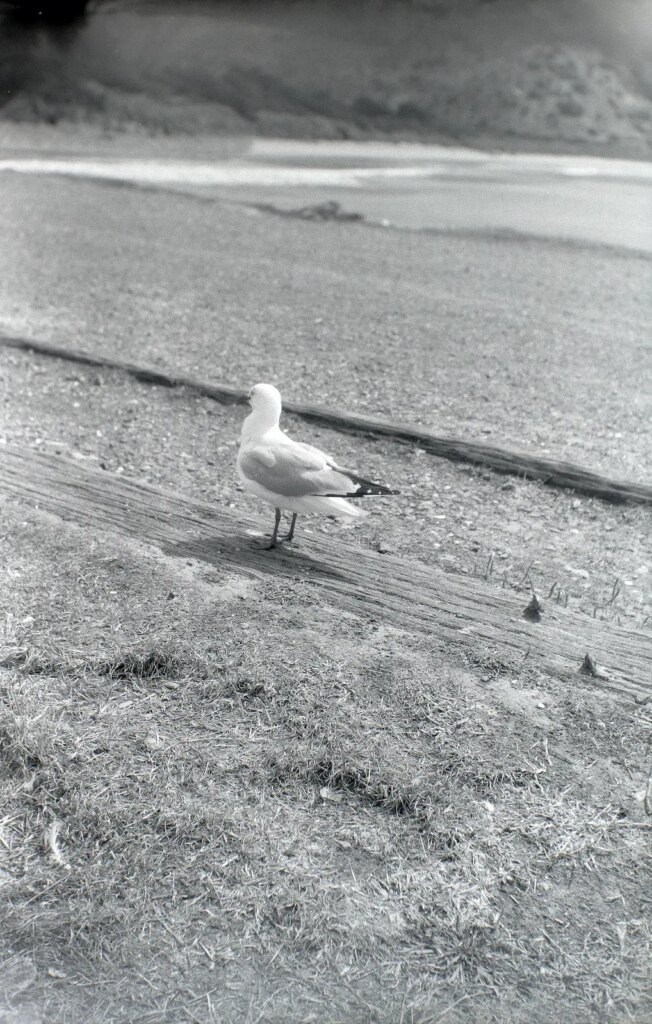
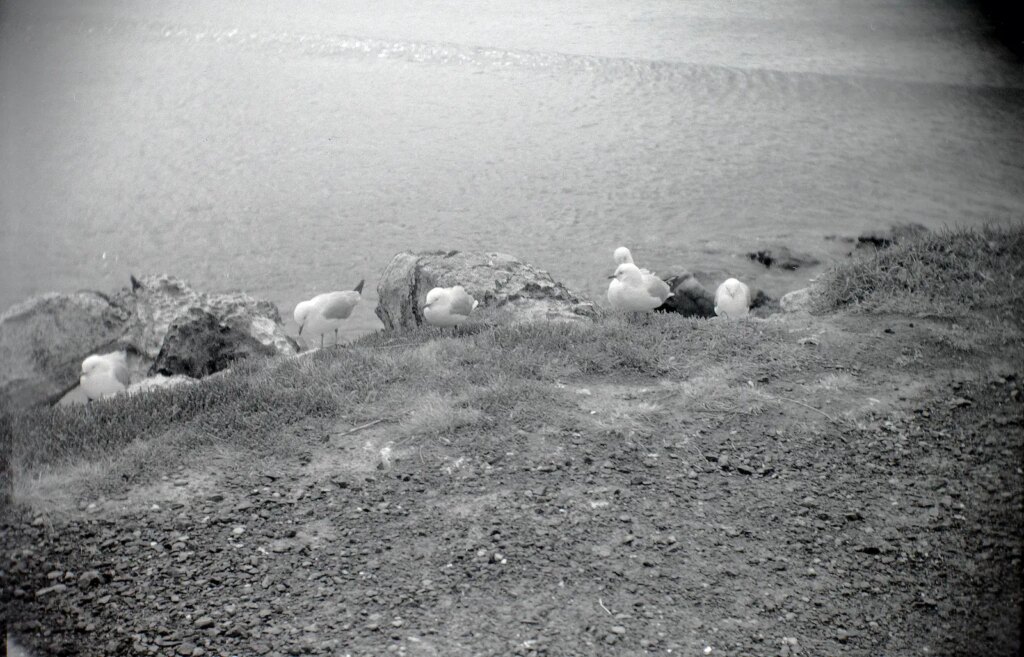
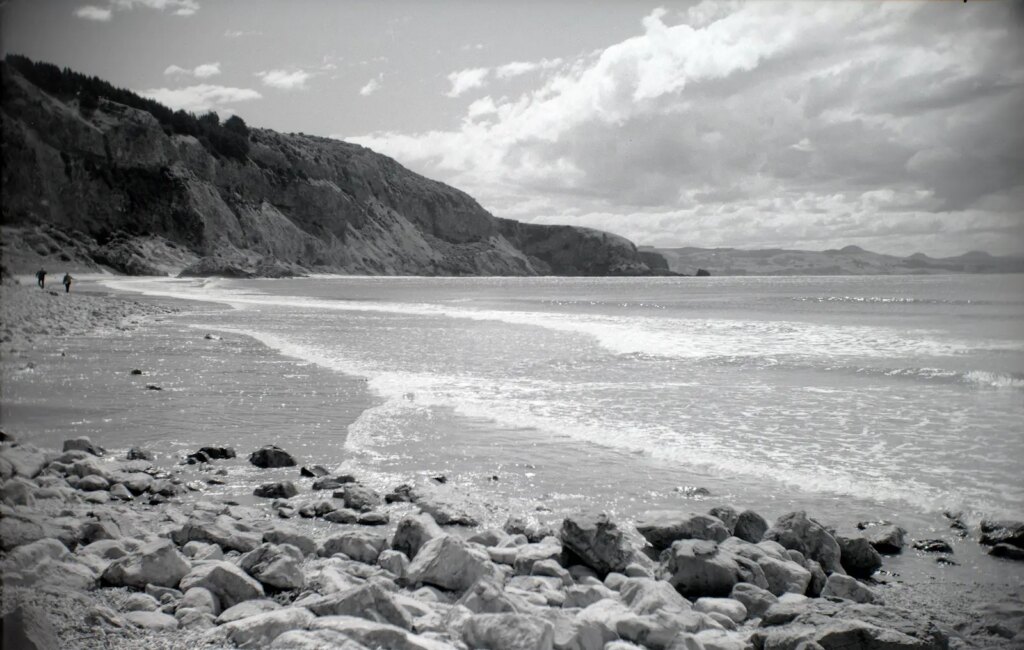
My results suggest there is a ‘sweet spot’ at each distance setting that seems to be a little further than each closest marked point. This makes sense given the usual 1/3 in front, 2/3 behind the point of focus for acceptable sharpness when assessing depth of field, the distance covered dependent upon the aperture in use. The small apertures provided here and subsequent digital processing help the overall quality of results.

Flash sync
A standard flash connection is fitted on the left hand side. Sychronisation is specified as being for M-type bulb flash units only. Because a flash bulb builds up to a maximum during firing, ‘M’ flash sync fires the bulb before a leaf shutter opens so that peak output coincides with the shutter being fully open at all shutter speeds. Electronic flash would fire too early in that case and not register but my speed tester and electronic flash shows the radial line frozen by the very brief electronic flash right at the start of its travel during the exposure. This is when the contacts closed, not earlier, so the line being recorded suggests electronic flash should be useable, certainly on my example.
Filters
Monochrome film almost always benefits from using filters and so I made a push-in adapter using sections cut from a 35mm film tub, making a good fit in the lens recess to take my clip-on filter holder, adapted to take 52mm filters.
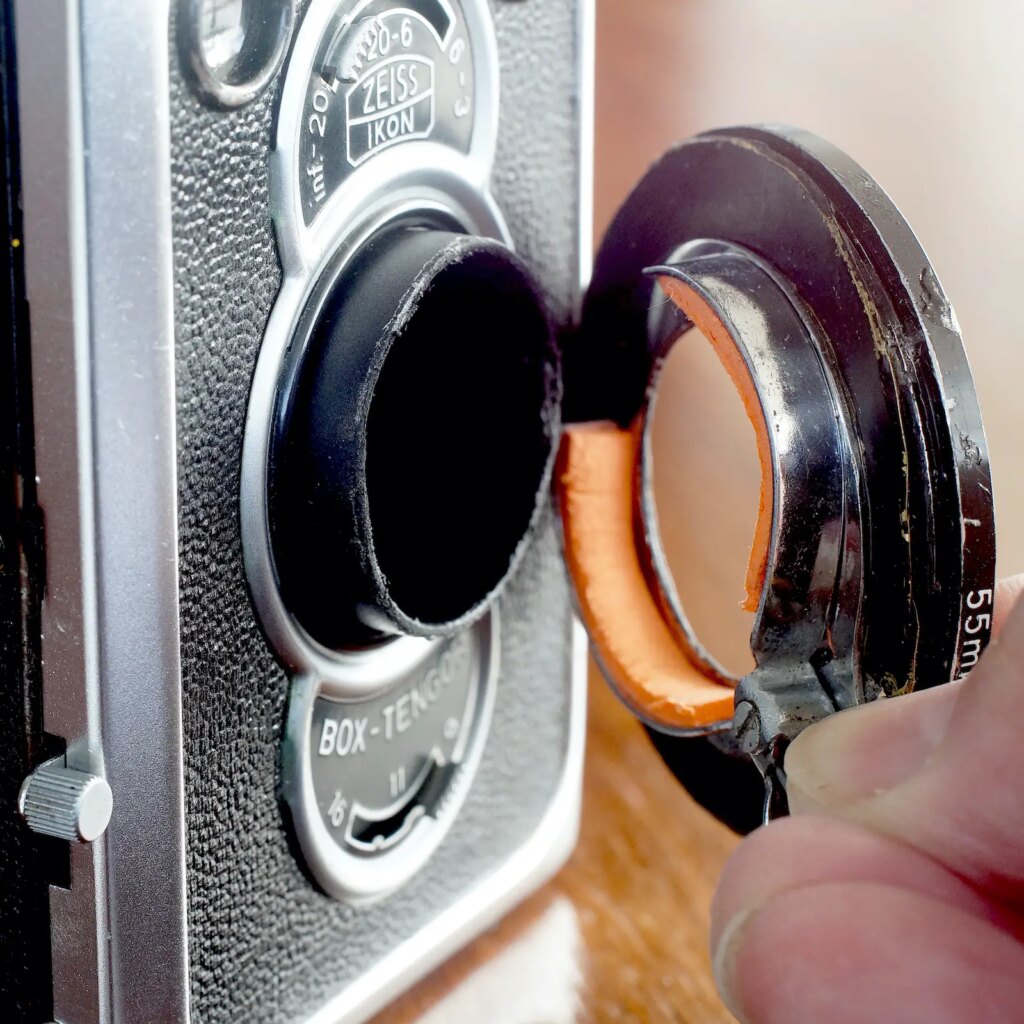
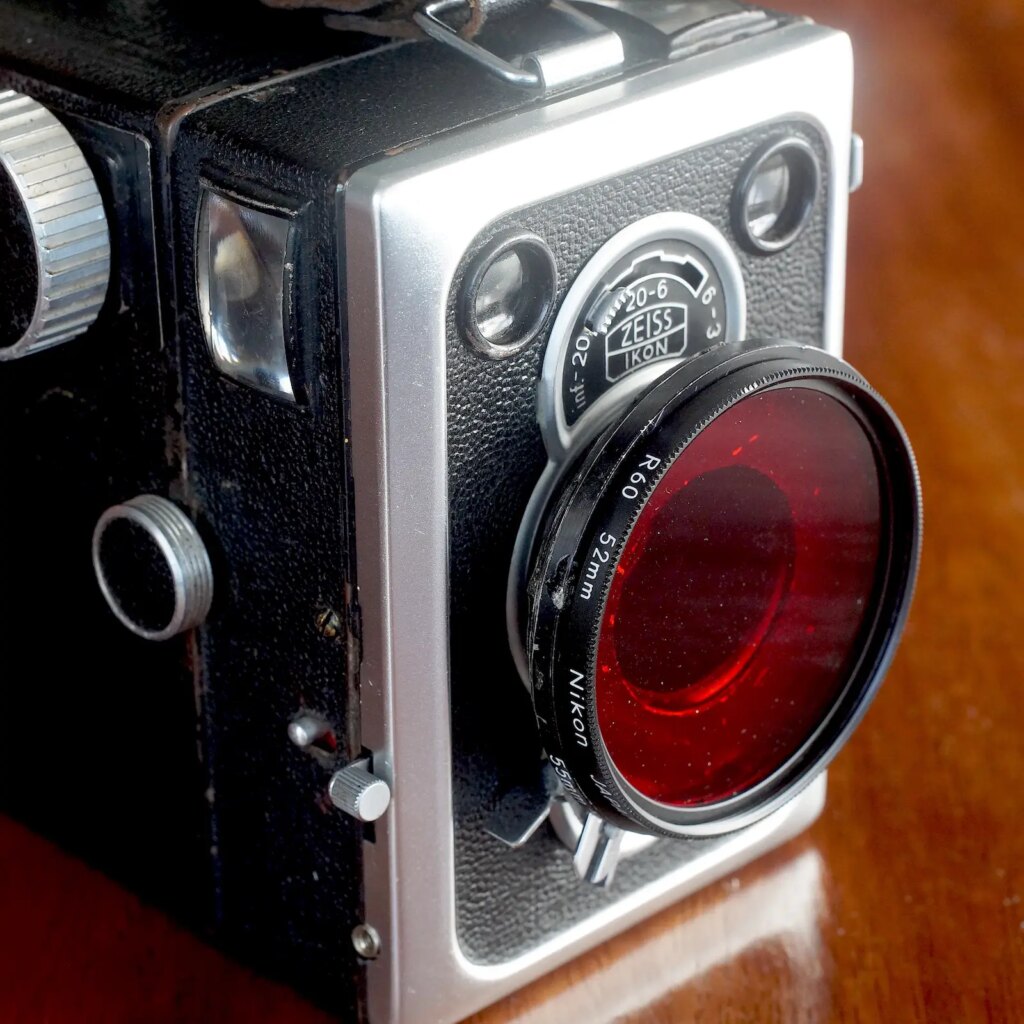
Originally, filters were sold to fit into the lens recess like my adapter, push-in rather than push-on but I have only ever seen one example illustrated.
Problems
At one point the interlock between the wind on and shutter locked up, preventing the shutter from firing. It turned out to be a broken spring which which had succumbed to 60 odd years of fatigue. To get to it would have meant taking the camera apart so I have bypassed it, since it is more a convenience than an essential function of the camera.
One film was badly fogged so I replaced the silk cord light trapping around the joint between the two halves of the body, curing the problem.
Otherwise everything works well.
Results
I shot some of my favourite subjects for comparison and was pleasantly surprised at the image quality produced. The learned, bronze gentleman in particular stands up well against all the other cameras I have used to record him.
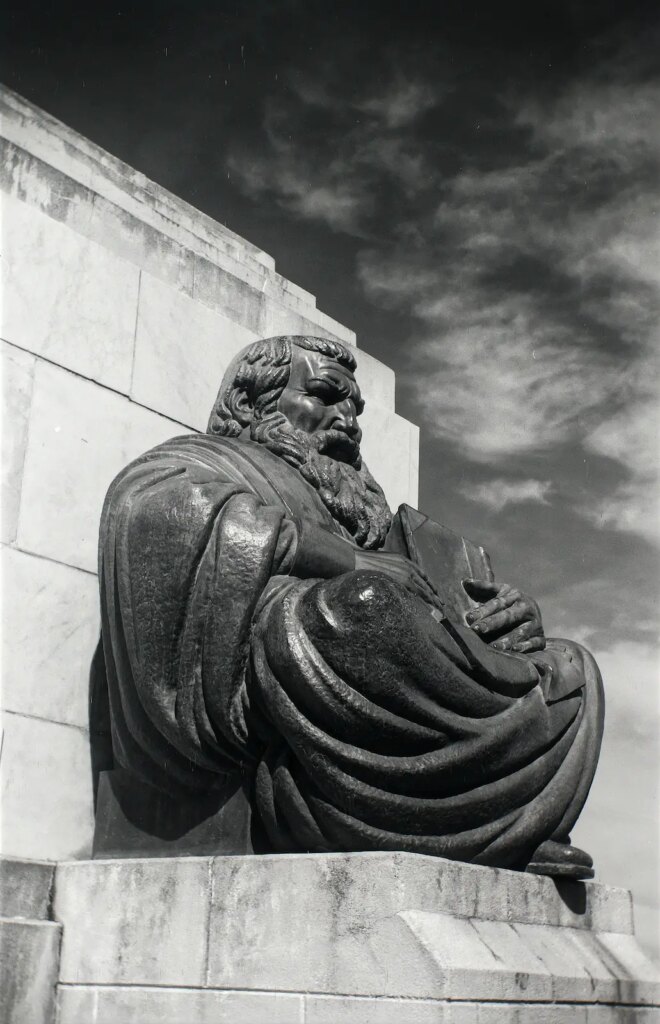
Infrared results are impressive and a convenient film to use. At a film speed of ISO 25, ‘Sunny 16’ fits well and provides maximum depth of field plus a two stop buffer for less than full sun.
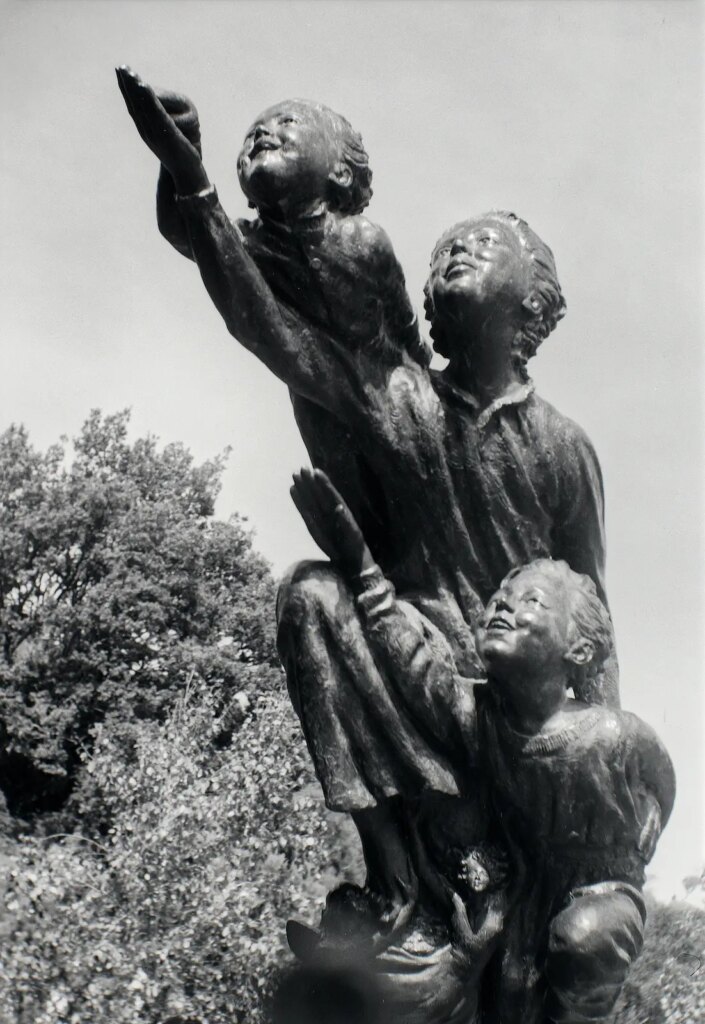
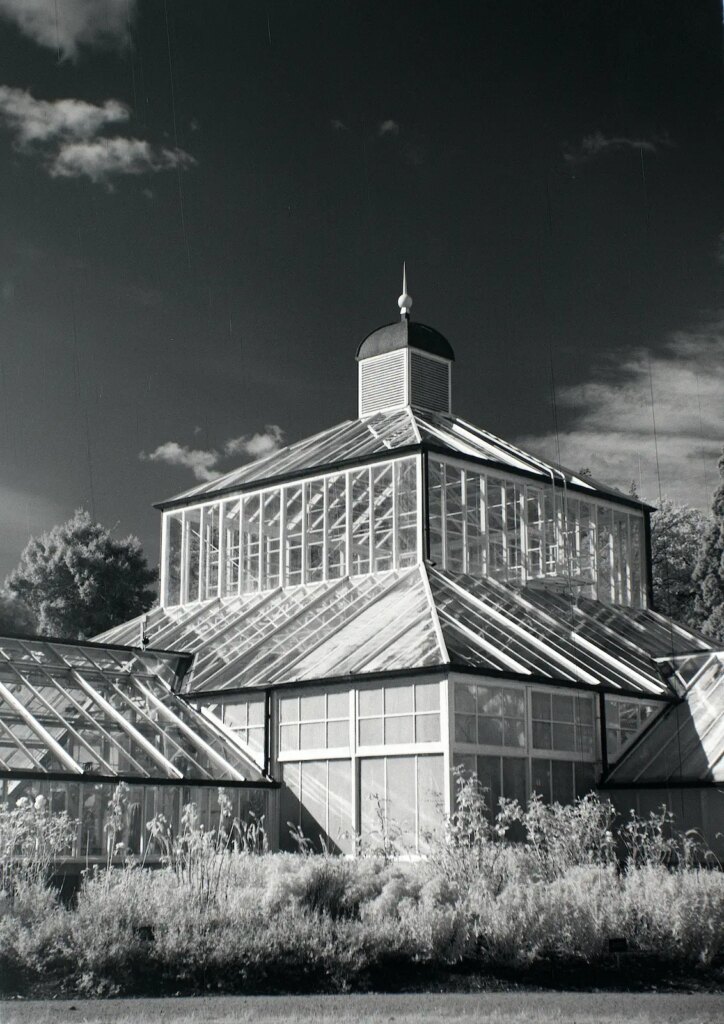
taken with Zeiss Box Tengor 56/2 – Rollei Infrared 400/IR 720 infrared filter.
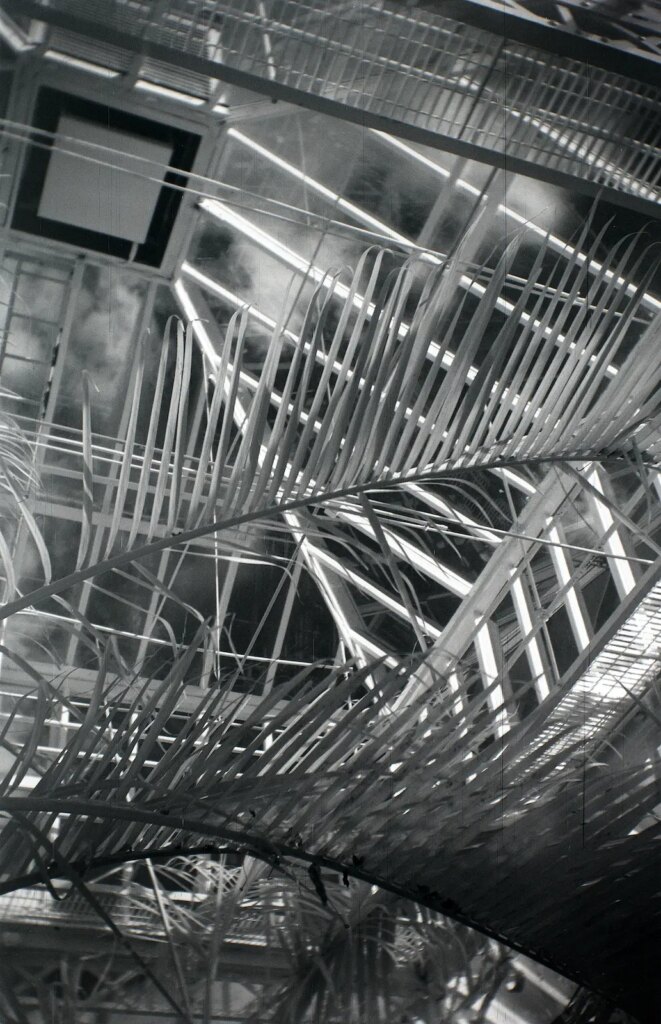
taken with Zeiss Box Tengor 56/2 – Rollei Infrared 400/IR 720 infrared filter.
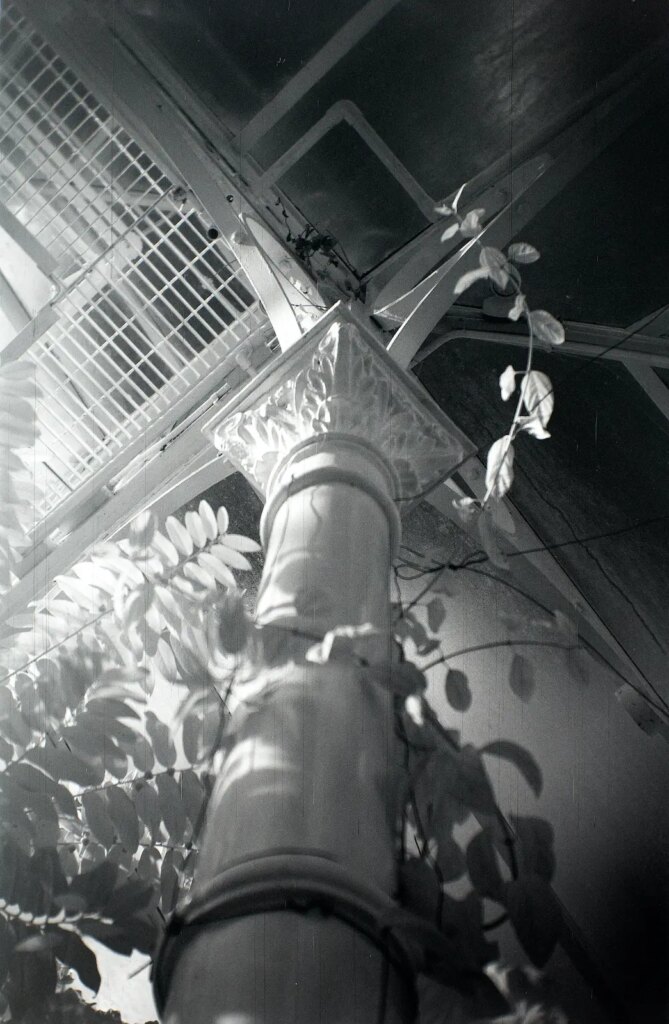
taken with Zeiss Box Tengor 56/2 – Rollei Infrared 400/IR 720 infrared filter.
All the images are shot on Ilford FP4+ and Rollei Infrared 400, processed in Rodinal.
Conclusion
Zeiss was always known for their uncompromising and often over-engineered designs and the Zeiss Box Tengor 56/2 is no exception. It even has a few Zeiss bumps under the leatherette in places. Highly regarded today, it really is one of the best of its type and left the stage in 1956.
Kodak’s preoccupation with making popular cameras more and more foolproof, however, sounded the death knell for simple film camera when they introduced 126 film and the Instamatic in 1963. No more the complicated process of loading 35mm or roll film. Just drop in a neat little cartridge and close the back. What could be easier? Well, mobile phones of course. I guess what goes around really does come around, Kodak’s invention of the first digital still camera in 1975 leading to the revolution in photography it triggered and the company’s eventual break up. Such is progress.
Share this post:
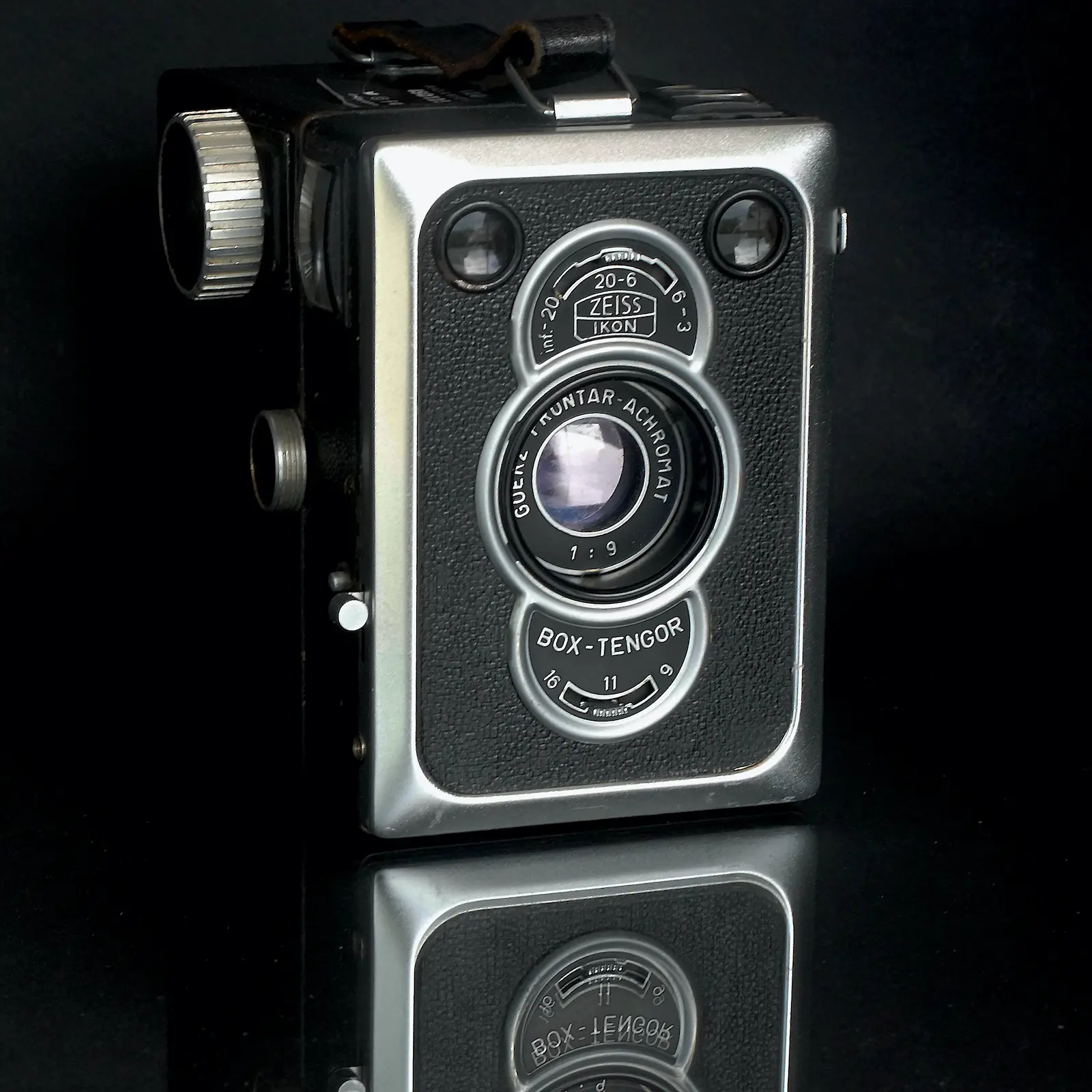








Comments
Scott Gitlin on Zeiss Box Tengor 56/2 – Pinnacle or SwanSong?
Comment posted: 19/06/2023
I have a few box cameras of the more "Model-T" kind: early Kodak Brownie 2 and Hawkeye Brownie along with a Conway Popular and Ansco Buster Brown. They also have a simple elegance.
Comment posted: 19/06/2023
Lance on Zeiss Box Tengor 56/2 – Pinnacle or SwanSong?
Comment posted: 19/06/2023
Comment posted: 19/06/2023
Marco Andrés on Zeiss Box Tengor 56/2 – Pinnacle or SwanSong?
Comment posted: 19/06/2023
The more constraints one imposes, the more one frees one's self of the chains that shackle the spirit.
Here’s a video showing how to hack a 35mm film canister to attach a push-on E30,5 filters to the very same camera:
https://www.youtube.com/watch?v=E6I2t4XlUZ4
[mute the video to avoid the annoying music]
Now I want this sublimely elegant camera.
Comment posted: 19/06/2023
Kodachromeguy on Zeiss Box Tengor 56/2 – Pinnacle or SwanSong?
Comment posted: 20/06/2023
Comment posted: 20/06/2023
Michael Elliott on Zeiss Box Tengor 56/2 – Pinnacle or SwanSong?
Comment posted: 20/06/2023
Comment posted: 20/06/2023
Comment posted: 20/06/2023
David Campbell on Zeiss Box Tengor 56/2 – Pinnacle or SwanSong?
Comment posted: 20/06/2023
Comment posted: 20/06/2023
Comment posted: 20/06/2023
Ibraar Hussain on Zeiss Box Tengor 56/2 – Pinnacle or SwanSong?
Comment posted: 21/06/2023
Comment posted: 21/06/2023